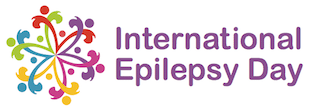Lara began life as a beautiful, happy child, reaching all of her milestones very early. Her eyes were bright and she would light up a room with her presence. There was something special about her.
Lara experienced her first seizure at the age of two, at the beginning of our first family holiday. Exhausted from a day of swimming and fun, we commenced dinner. We soon noticed Lara looked drowsy and would not eat. Suddenly, she fell from her chair and developed a jerking motion in her right arm and leg. We desperately asked her if she was ok, however she was unresponsive – her eyes wide open and staring straight ahead.
Our minds raced, fearing the worst. Was she having a stroke? Are we about to lose her? We called an ambulance, which arrived just as the jerking stopped and she began crying, around 6 minutes after it began. The paramedic concluded she’d had a febrile seizure, and that we shouldn’t be concerned. This did little to alay our fears however – as we then noticed Lara’s entire right side was paralysed. Continuing to fear stroke, we drove her to the nearest hospital. Thankfully, upon arrival, Lara regained movement in her right side, however the doctors there remained concerned, and ordered her transfer to the Royal Children’s in Melbourne.
This was just the beginning of a journey that would become a rollercoaster for Lara and our family.
We endured a stressful month following Lara’s seizure, awaiting appointments for an EEG and subsequent MRI. The EEG returned an abnormal result, recommending structural imaging – and we feared the possibility of a brain tumour. Thankfully the MRI cleared her of this, and she was diagnosed with Epilepsy and prescribed an anticonvulsant.
Over the next 2 years, Lara experienced multiple seizures, usually coming in groups of 2-5 seizures, a day apart, every 1 to 2 months. Thankfully these seizures usually occurred at night as she fell asleep, and didn’t interfere with her life as a normal child too much. Lara continued to progress well in all other respects – learning fast, using complex language well beyond most children her age, and developing her motor skills. However, despite trying various medications and monitoring any changes via EEG, we were unable to stop her focal seizures.
In July 2016, Lara’s otherwise normal development slowed, and she began to regress. Our neurologist informed us that she believed Lara has a rare form of Epilepsy called CSWS (Continuous Spike and Waves in Sleep). Her motor skills declined, her speech and learning slowed. In the following months she developed a condition called “Negative Myoclonus”, where she’d briefly lose control of her right arm, causing it to drop as she reached for objects. Soon after, this began to affect her neck muscle control, putting her at risk of injury as her head would drop. Simple tasks like holding a pencil and colouring in became nearly impossible. She struggled to feed herself. Life became very difficult for our family, as we struggled to support her, and desperately searched for answers with the help of our neurologist.
Several medications were trialed without success, along with regular steroid treatments. With each new medication came side effects – drowsiness, wild mood swings and irritability. Finally in October 2016, Lara woke one day and was unable to walk without falling. The negative myoclonus was now affecting her leg muscle control. With this, Lara was admitted into hospital and we were informed that Lara was ataxic. We began IVIG treatment and again changed some of Lara’s medications. Lara’s seizures also increased, at one point experiencing eight seizures over two days. Her head was constantly dropping. She was unable to support herself and required a helmet. We required help with simple tasks most 5 year olds can manage easily. She also began experiencing absence seizures.
Not knowing how long this would last, or if she’d ever improve from this state – we prepared to support Lara. We shopped for wheelchairs, walkers, and visited schools for children with special needs in preparation for Prep the following year.
Three weeks following IVIG treatment we took Lara outside to get some exercise. She surprised us and began to walk without dropping. Bit by bit she was improving. Her Negative Myoclonus and Ataxia disappeared. Having feared her condition would remain poor for years to come, we were relieved to watch her suddenly improve, and to realise that rather than remain permanent, her worst symptoms would come and go in cycles.
Lara is currently 6 years old. Epilepsy continues to take her on a rollercoaster, as she struggles with poor fine and gross motor skills, and learning difficulties. We are in the process of having genetic testing done, and are part of a research project in the hopes of finding the cause and a cure for this debilitating disease. Even though we have some hard years to come we live in hope that Lara should outgrow her Epilepsy by her mid-teens.

